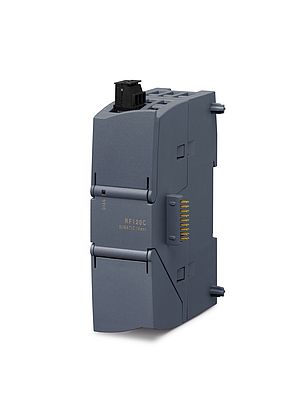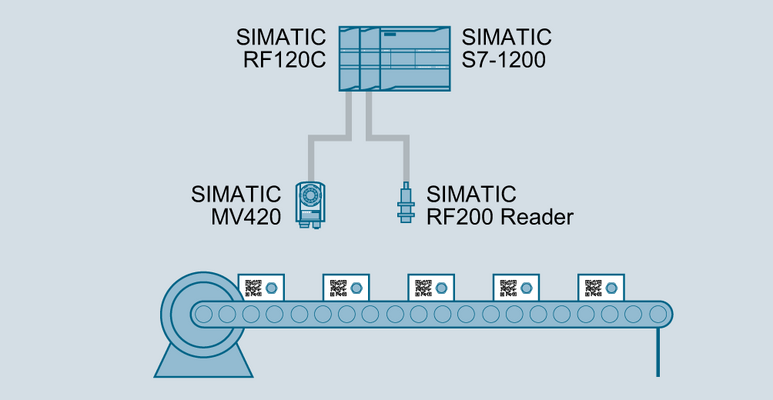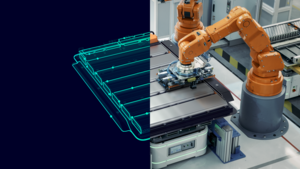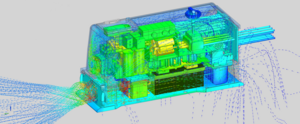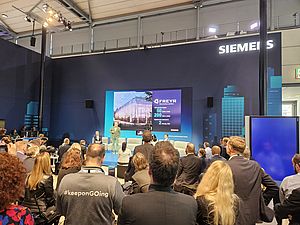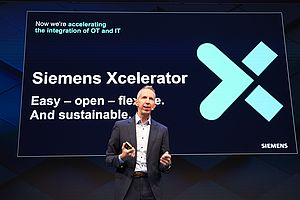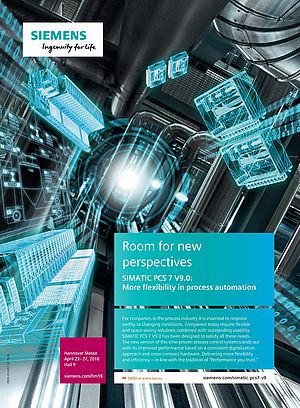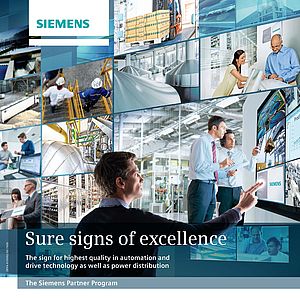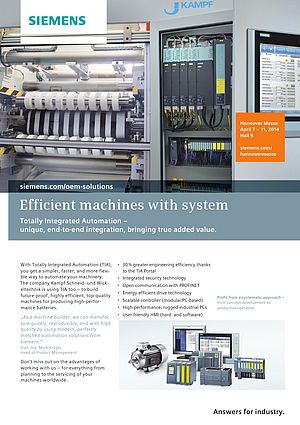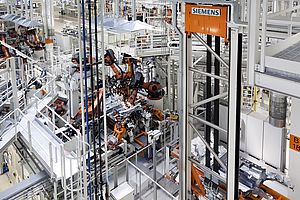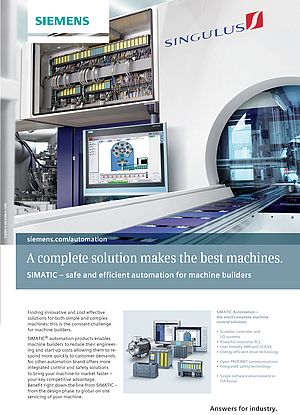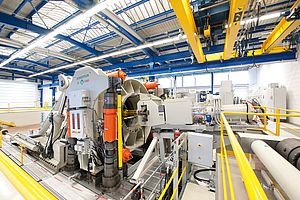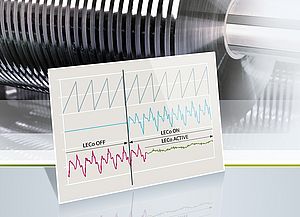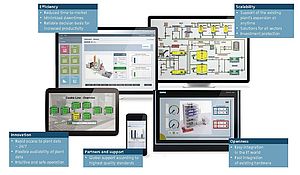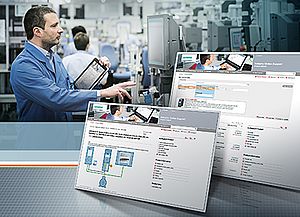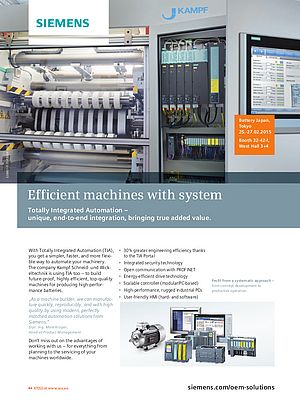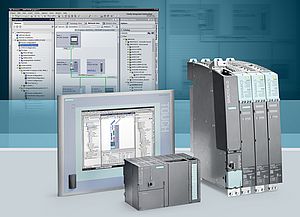Siemens launched the compact controller Simatic S7-1200 with the TIA Portal in 2009. Since then, the popularity and the functionality of this controller have steadily increased. Since August 2013, the identification technology with RFID and code reading devices is also forming a unit with the controller S7-1200. The link for this is the new communication module Simatic RF120C.
If a solution for the clear identification and marking of products in the production or logistics is needed, a complete portfolio of RFID and code reading devices under the name Simatic Ident is offered by Siemens for that. From small tools to large automobiles, the identification is made possible using simple paper labels, sophisticated transponders or a dot-peened data matrix code. The identification devices are joined by a uniform system connection via communication modules - so that the programming and commissioning of the solution remains independent of the identification technology used. A new communication module, which is inserted directly into the controller S7-1200 and programmed via the TIA Portal, significantly reduces the effort during the planning, programming and commissioning thanks to the easy and intuitive engineering.
Easy to operate - intuitive engineering
If one is familiar with the S7-1200 and the TIA Portal, but has never programmed an application for the industrial identification, then the new module RF120C and its easy handling will be appreciated, since almost no documentation is needed for the commissioning. The hardware configuration is carried out via drag & drop - as with all S7-1200 modules. During the subsequent parameterization of the reader connected to the RF120C, all selection options are likewise presented as text. For a simple reader from the RF200 family, no further settings are needed, whereas for a UHF reader from the RF600 family, several settings are required. This reader parameterization is performed in the hardware parameterization of the RF120C. As a result, any other specific setting for which a manual was always needed in the past can now be omitted during the creation of the control program. Up to three RF120C modules can be placed in an S7-1200.
The control program is created just as easily and intuitively with the TIA Portal V12. All identification functions are clearly depicted in a library. The names of the new application blocks already describe their function. For instance, the block READ represents the reading function and the block WRITE the writing function for a transponder. At the block, only the address on the transponder needs to be specified - and just like that, all RFID-specific parameters are defined. Moreover, the handling of the new blocks is identical to that of the popular communication blocks of Simatic. It is clear at a glance that EXECUTE starts an instruction, the block output DONE displays the positive completion message and the output ERROR displays the negative completion message.
The comprehensive functions of the TIA portal are available for the commissioning, diagnosis and troubleshooting. In addition, Siemens offers the Simatic S7-1200 app for download. This app provides support during the commissioning of an RFID application. Using a smart phone in the plant, one can manually move a container with RFID transponder and immediately see on the display when the transponder was recognized by the reader and when the data was read. These simplifications greatly reduce the costs for the programming and shorten the time required for the commissioning.
Another aid for the mechanical and electrical planning of an entire system is provided by the CAx data, which is made available for download via the CAx download manager from the Siemens customer support. Data includes a 2D dimensional drawing, 3D model or macro for EPLAN P8. Technical documentation, data sheets and approvals can also be requested via the CAx download manager.
High performance at a low price
With the controller S7-1200, the communication module RF120C and the Ident family RF200, Siemens offers an identification solution at a low price. All three components are positioned in the entry-level segment. Expensive cabling from bus connection and power supply to external communication modules likewise is no longer necessary, since these connections are established via the controller. Due to the single-channel design of the RF120C, one only pays for the channels used. There are no unused reader connectors that must be purchased. At the same time, one does not have to forego performance, since the RF120C communicates directly with the CPU in the controller via acyclic data records. The cyclic communication for fast IO modules thus remains completely unaffected by the RFID application. Furthermore, even the fastest RFID system on the market - the RF300 with up to 64 kilobytes of memory - can be operated at full speed at the RF120C.
Control programming for identification systems
The basis for the high performance of the identification technology for different applications is formed by the Ident profile. It is available in the TIA Portal from the library Identification at the program block PIB_1200. The Ident profile was developed by PROFIBUS International (www.profibus.com) for its members and is described there at "Identification Systems - Proxy Ident Function Block". Siemens has been marketing the Ident profile for many years with the blocks FB101/116/132 in the controllers Simatic S7-300/400 and SIMOTION.
Uniform system architecture for all devices
The configuration with the RF120C depicted in Image 4 is only a part of the entire system architecture of the Siemens identification technology. For larger configurations that are to be implemented with PROFIBUS and PROFINET, the long-established communication modules RF180C (PROFINET) and ASM 456 (PROFIBUS) can be connected to an S7-1200. It is irrelevant, which of the communication modules - RF120C, RF180C or ASM 456 - is employed, one always works with the same function blocks from the library.
In addition to the copy templates for the S7-1200, the TIA portal library Identification also includes the copy templates for the S7-1500. Both folders contain identical application blocks. As a result, control programs for the identification, which were written in SCL (Structured Control Language) for the S7-1200, can likewise be used for the larger S7-1500. The identification application can therefore be programmed fully independent of the controller hardware, the communication module used and the readers from the product families RF200, RF300, RF600, MOBY D/U and MV400 connected to it. This protects the investments made in the control programming for the future, since an adaptation of the existing RFID application to a new hardware is not needed, if a different controller or identification technology is to be used in the next project.
An application example illustrates this: An application in an industrial environment requires an installation, where a data matrix code (DMC) applied to a raw part is read, and the content then written to an RFID transponder on a system pallet. Previous experience only includes the programming of a simple identification application, e.g., a garage door control, with the S7-1200 and the RF200. For the new task, one simply takes the existing program and links the READ block to a code reader Simatic MV420 to read the DMC code. This is followed by the configuration of an RF120C with an RF200 reader. In the program, the RF200 reader is linked to the WRITE block. Now only the link of the data read from the READ block of the MV420 to the WRITE block of the RF200 is missing - and the desired application is complete.


